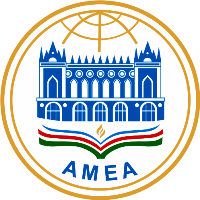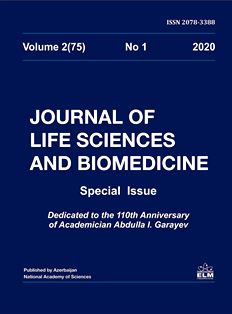
The histological and cytological analysis of muscles of lizards (Reptilia, Squamata)
Research article: The histological and cytological analysis of muscles of lizards (Reptilia, Squamata)
Author (s): J.A. Najafov1*, R.T. Hashimov2
1 Department of Zoology and Physiology, Baku State University, 23 Academician Z.Khalilov Str.,
Baku AZ 1148, Azerbaijan
2 Department of Medical Biology and Genetics, Azerbaijan Medical University, 167 S. Vurgun Str.,
Baku AZ 1022, Azerbaijan
*For correspondence: canbaxish@gmail.com
Received: April 06, 2021; Received in revised form: April 12, 2021; Accepted: April 21, 2021
Abstract
All lizard cells possess microfilaments. However, there are many microfilaments in muscle cells, and these cells provide contraction. In our research, we have used three species (Ophisops elegans (Menetries, 1832), Lacerta strigata (Eichwald, 1831), Tenuidactylus caspius (Eichwald, 1831)) of lizards. In the embryonic period of lizard, myoblast cells are formed from the myotomes. Migration of myoblasts are essential to generate the skeletal muscles. When myoblasts reach their target area, they first form the muscle plate. The number of nuclei in the muscle plate is small and their length is short. Muscle plates are fused with myoblasts to form a large syncytium for producing myosymplast. During the further development of the embryo, related parts of membranes of myoblasts disintegrate and become the sarcoplasmic reticulum. As a result, a long myotube is formed. When we investigated skeletal muscles of hind limbs, according to their colour, three types of muscle fibers were found in the skeletal muscles of the lizard. Red fibers were observed in Lacerta strigata more commonly than that in other two lizards. In the same muscles, light fibers were observed in Tenuidactylus caspius more frequently. That allows them to move on vertical surfaces very quickly. Ophisops elegans had more intermediate colored fibers than the other two lizards. Diameter of myotube depended on species of lizards, muscle location, age of animal and its size. Thickness of epimysium, perimysium and endomysium, observed in the same lizard, also varied depending on type of muscles, the animal's age, weight and environmental conditions where it lived. Myofibrils of cardiomyocytes occupy up to half of total volume of the cytoplasm. In lizards, force of the smooth muscle is more than that of the skeletal muscle. Structural characteristics of skeletal muscle fibers are influenced by many factors such as species, genotypes, nutritional and environmental factors.
Keywords: Muscle cell, myofibril, histological structure, Ophisops elegans, Lacerta strigata, Tenuidactylus caspius
REFERENCES
Curtin N.A., Woledge R.C., Aerts P. (2005) Muscle directly meets the vast power demands in agile lizards. Proc. R. Soc. B, 272: 581-584.
Garland T.Jr., Bennett A.F., Rezende E.L. (2005) Phylogenetic approaches in comparative physiology. J. Exp. Biol., 208: 3015-3035
Garland T.Jr., Losos J.B. (1994) Ecological morphology of locomotor performance in squamate reptiles. In: Ecological Morphology: Integrative Organismal Biology (ed. P.C.Wainwright and S.M.Reilly), Chicago, IL: University of Chicago Press: 240-302.
Higham T.E., Russell A. P. (2010) Divergence in locomotor performance, ecology, and morphology between two sympatric sister species of desert-dwelling gecko. Biol. J.Lin Soc., 101: 860-869.
Najafov Dj.A. (2007) Comparative evolutionary histogenesis of somatic muscles in vertebrates in prenatal life. Baku.: Muallim, 223 p. (in Russian)
Najafov Dj.A., Hashimov R.T. (2014) Morpho-genesis of somatic muscles in reptiles in early embryogenesis. J. Morphology. St. Petersburg ("Esculap"), 145 (3): 136. (in Russian)
Najafov Dj.A., Hashimov R.T. (2014) Some ecological features of the Caspian bent-toed gecko (Reptilia, Squamata) on Absheron Peninsula. Proceedings of the Institute of Zoology of Azerbaijan NAS, 32: 129-136. (in Azerbaijani)
Nelson F.E., Jayne B.C. (2001) The effects of speed on the in vivo activity and length of a limb muscle during the locomotion of the iguanian lizard Dipsosaurus dorsalis. J. Exp. Biol., 204: 3507-3522.
Vitt L.J., Pianka E.R., Cooper W.E., Schwenk K. (2003) History and the global ecology of squamate reptiles. Am. Nat., 162: 44-60.























